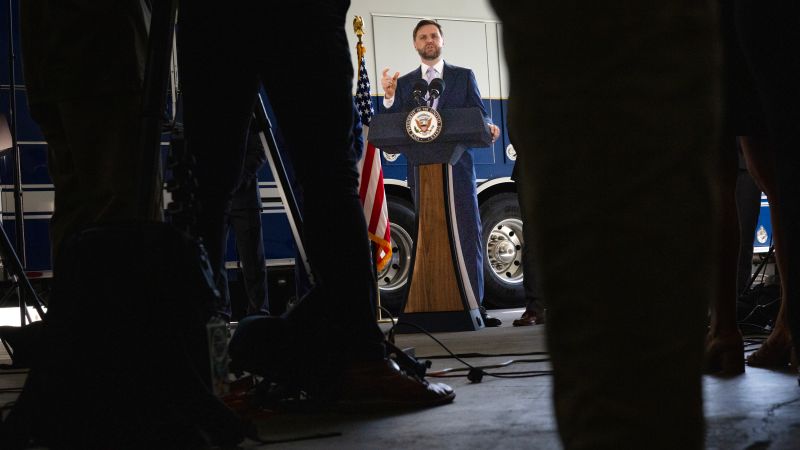On a noteworthy Friday, Vice President JD Vance sparked controversy during a press briefing where he took a jab at Democratic Senator Alex Padilla, mistakenly referring to him as “José Padilla.” Amid this gaffe, Vance underscored the Trump administration’s contentious decision to deploy the California National Guard in Los Angeles, drawing significant attention to the escalating situation regarding immigration enforcement and public dissent in the area.
In his remarks delivered at an FBI mobile command center in Los Angeles, Vance expressed his disappointment that “José Padilla” was not present to engage in a discussion. He implied that Padilla’s absence was due to a lack of “theater,” suggesting that the senator’s involvement was more about performance than genuine concern. This comment was emphasized as a critique of Padilla’s previous actions, particularly his conduct during a press briefing led by Homeland Security Secretary Kristi Noem the week prior. In that incident, Padilla was forcibly ejected by law enforcement as he attempted to challenge Noem, a move that prompted public outcry and further political ramifications.
Padilla, who made history as California’s first Latino elected to the U.S. Senate, was removed from the press conference at the FBI Los Angeles headquarters after he interrupted Noem’s discourse regarding the administration’s response to protests linked to immigration enforcement. This incident marked a significant moment in ongoing tensions surrounding law enforcement’s role in immigration matters, amplifying scrutiny of the Trump administration’s policies.
When questioned about the misidentification of Senator Padilla, Vance’s spokesperson, Taylor Van Kirk, dismissed the error, suggesting that it was simply a mix-up concerning individuals associated with illegal activities. Despite this explanation, criticism flowed from various quarters, with Padilla’s communications director, Tess Oswald, taking to social media platform X (formerly Twitter) to emphasize that the Vice President, as a former colleague, should know better. Oswald called for Vance to redirect his focus towards promoting demilitarization rather than making disparaging remarks.
Furthermore, California’s Governor Gavin Newsom echoed similar sentiments, stating on X that Vance’s mistake was “not an accident,” implying intentionality behind the Vice President’s verbal slip. This episode unfolded alongside a legal development where a federal appeals court allowed President Donald Trump to retain control over thousands of California National Guardsmen, a decision promoting an ongoing debate about the militarization of domestic environments, particularly amid civil unrest.
In affirming the court’s decision, Vance stated that the determination regarding the use of National Guardsmen was justified, expressing hope that such measures would not be necessary again. He elaborated on the ruling from the 9th U.S. Circuit Court of Appeals, which temporarily permitted Trump to keep approximately 4,000 guardsmen federalized for security in Los Angeles. Vance highlighted the defender’s need for federal intervention when circumstances called for protection, indicating an enduring defense of stringent measures amidst the rising contention in immigration enforcement practices.
In addition to addressing the deployment of the National Guard, Vance defended the administration’s stance on immigration policy, asserting that the President aimed to prioritize the deportation of violent offenders while ensuring that no undocumented individual felt exempt from enforcement actions. When asked if the administration’s tactics risked being too harsh, Vance maintained that he did not believe the approach had been overly aggressive, resolving to correct any mistakes swiftly.
This unfolding political drama underscores a larger narrative about the intersection of immigration policy and public safety, revealing the complexities and contentious nature of immigration enforcement in contemporary American society. With Vice President Vance’s comments, the lingering impact of the Trump administration’s legacy on immigration remains a focal point of political dialogue, reflecting ongoing divisions and debates that resonate across the nation.
In conclusion, this incident showcases the intricate dynamics of political rhetoric, public policy, and the responses these interactions provoke within the political sphere, notably highlighting the evolving nature of governance and societal responses to immigration challenges in the United States. The dialogue continues, marking an important chapter in California’s political landscape as it faces the realities of immigration enforcement and public perception.



